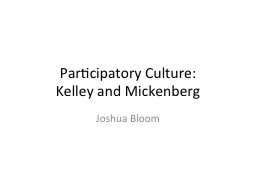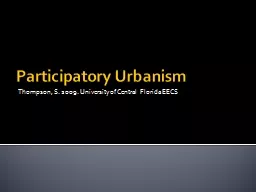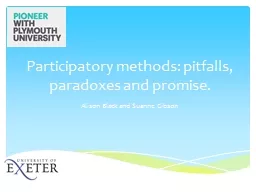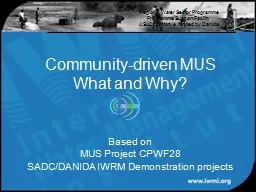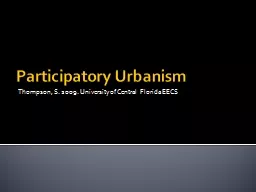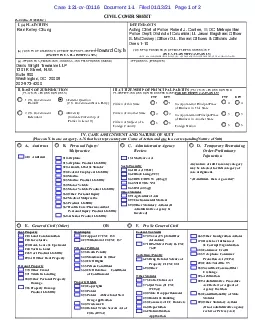PPT-Participatory Culture: Kelley and
Author : pamella-moone | Published Date : 2018-03-12
Mickenberg Joshua Bloom Kelley Focuses on the emergence of women into the public sphere Women were always seen as less educated than men but this changed once schools
Presentation Embed Code
Download Presentation
Download Presentation The PPT/PDF document "Participatory Culture: Kelley and" is the property of its rightful owner. Permission is granted to download and print the materials on this website for personal, non-commercial use only, and to display it on your personal computer provided you do not modify the materials and that you retain all copyright notices contained in the materials. By downloading content from our website, you accept the terms of this agreement.
Participatory Culture: Kelley and: Transcript
Download Rules Of Document
"Participatory Culture: Kelley and"The content belongs to its owner. You may download and print it for personal use, without modification, and keep all copyright notices. By downloading, you agree to these terms.
Related Documents

